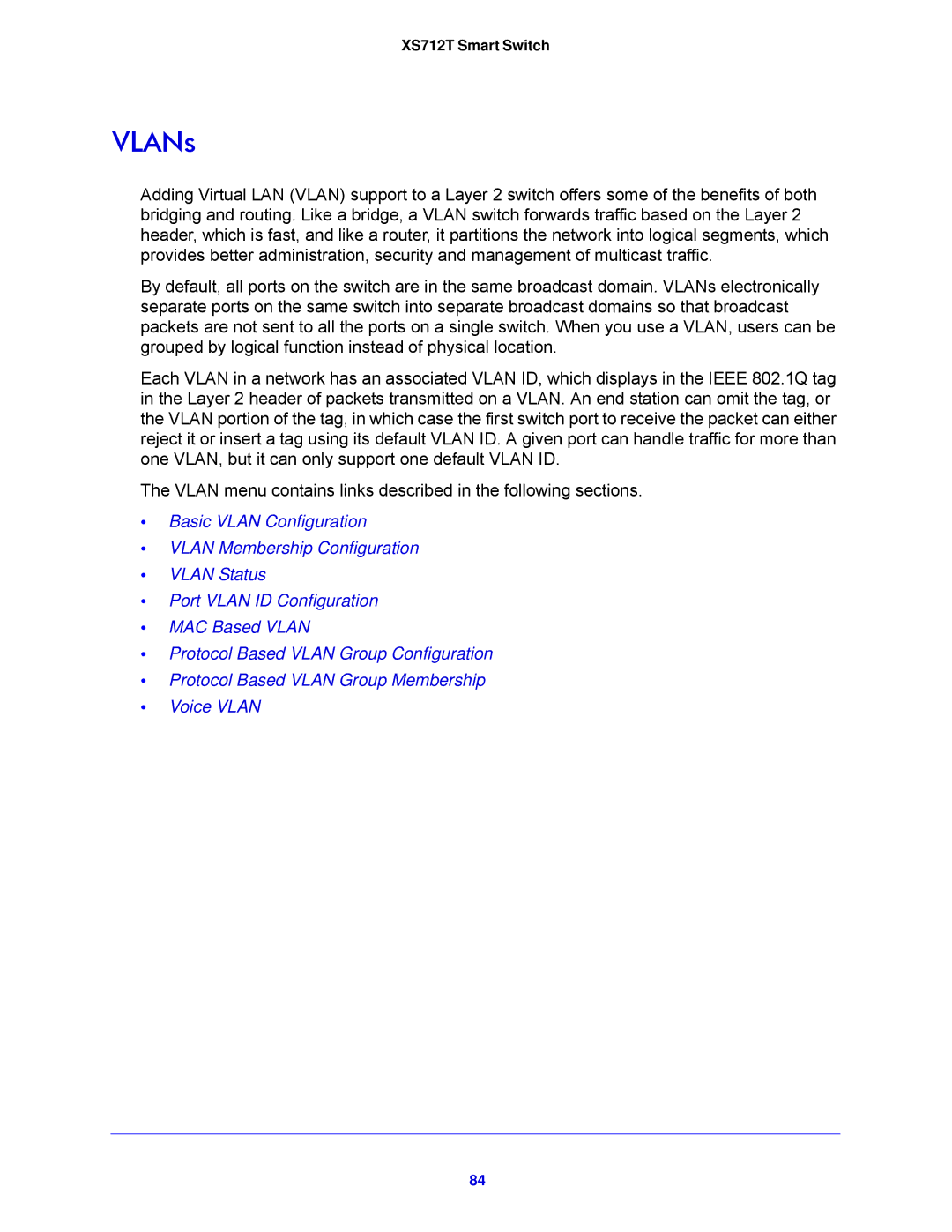XS712T Smart Switch
VLANs
Adding Virtual LAN (VLAN) support to a Layer 2 switch offers some of the benefits of both bridging and routing. Like a bridge, a VLAN switch forwards traffic based on the Layer 2 header, which is fast, and like a router, it partitions the network into logical segments, which provides better administration, security and management of multicast traffic.
By default, all ports on the switch are in the same broadcast domain. VLANs electronically separate ports on the same switch into separate broadcast domains so that broadcast packets are not sent to all the ports on a single switch. When you use a VLAN, users can be grouped by logical function instead of physical location.
Each VLAN in a network has an associated VLAN ID, which displays in the IEEE 802.1Q tag in the Layer 2 header of packets transmitted on a VLAN. An end station can omit the tag, or the VLAN portion of the tag, in which case the first switch port to receive the packet can either reject it or insert a tag using its default VLAN ID. A given port can handle traffic for more than one VLAN, but it can only support one default VLAN ID.
The VLAN menu contains links described in the following sections.
•Basic VLAN Configuration
•VLAN Membership Configuration
•VLAN Status
•Port VLAN ID Configuration
•MAC Based VLAN
•Protocol Based VLAN Group Configuration
•Protocol Based VLAN Group Membership
•Voice VLAN
84
